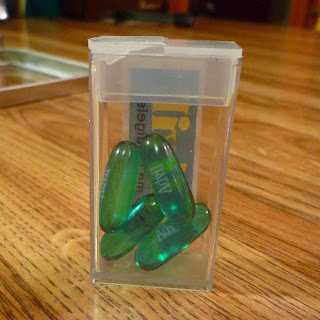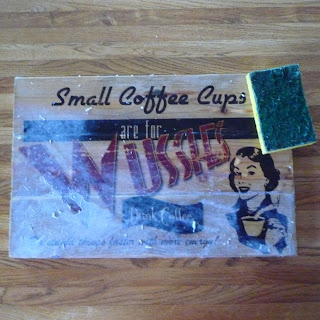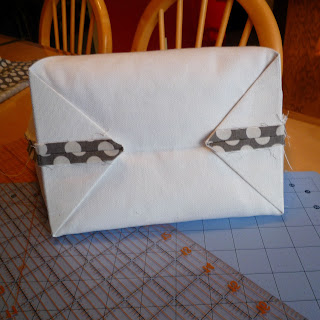First, I did order the nugget tins from specialtybottle.com as one of the ladies recommended on her website. I looked quite a bit online and they had the best pricing.
I carried one of these tins around with me in my purse for a couple of weeks as I was shopping for little items that would be practical and also inexpensive and, oh yeah, FIT! Once I was satisfied with what I had this is what I had amassed:
There are 2 Band Aids, 1 hand sanitizer, 1 6-piece pack of gum, a mini sharpie marker, a piece of Dove milk chocolate and one of dark chocolate, 4 Advil Liquigels, 5 paper clips in fun colors, 2 bulldog clips and a mini super glue. I kept all of my receipts and when I added up everything, including the tin, it came out to right around $4.75. I found some really great deals like the mini bulldog clips at Office Depot in bags of 24 for $2, the hand sanitizer for $.33 (which I paid a dollar each for at Office Depot, and returned when I found them so much cheaper elsewhere!) Also the mini super glue, which I passed up because they were listed for $3.95/4 on the shelf, but I found in a bin for $2.00/4 at the checkout. Also, I purchased the Sharpie markers (which I had no idea were so spendy!) at Joann Fabric over the course of about a week and a half using 50%-60% off coupons! Sorry to bore you with the details, but it was kind of a fun challenge to see how cheaply I could get things. Really quickly, for the Advil, I wasn't able to find the little 2-pill foil pouches like I wanted, so I ended up making my own mini containers by purchasing small plastic storage containers with a flip top (much like the ones tic-tacs come in.) I found these in the bead organization isle at Joann and, yes, I used a 50% off coupon!
I printed labels on transparent return address labels so the recipient of the gift would know the facts.
To make the dividers for the tin, start with you largest item first and figure out how big your largest compartment needs to be. For my tins, it was the gum. Cut a piece of cardstock that is as long as the tin, and as wide as the tin plus TWICE the dimension of your divider height.
For example, in this case the cardstock needs to be 5" long by 3 1/2" PLUS two times 3/4" (or and inch and a half) so a total of 5". Measure over from one edge to allow enough room for your first item, giving just a tad extra and score along the length of the paper. Measure over 3/4" and score again and once again measure over 3/4" and score. You should have three parallel score marks as shown in the illustration below.
Fold on the score marks. This will create the first ridge that divides the tin into two compartments lengthwise. Continue making cardstock inserts until you have all of the divisions you want. It will take some playing around with the space and your items to get it all laid out in the most efficient manner. Once all of my dividers where in, this is what it looked like.
Now the fun part: filling the tin!
On display:
To finish the gift off, I made a decorative enclosure for a pad of Post-It notes to be attached to the top.
They pad is permanently affixed with glue and has a magnetic closure. This one says "thank You Teacher" but I also made ones that say "Merry Christmas" and "Just For You".
Just add a little ribbon and they're ready to go, no gift-wrap required.
I have 30 of these available, no two alike. I will be selling them for $12 each. As a shameless plug, for those in the area the Christmas Boutique is this Saturday, December 1st. The sale goes from 9-3 pm. Kim, the hostess, has been doing this for years and she makes FOUR HUNDRED DOZEN COOKIES!! Yes, you read that right. She also invites lots of other quality vendors. The sale is on her family farm in Scandia MN, address is 22430 St. Croix Trail North (Highway 95). If you have questions for Kim, you can reach her at 651-433-3881. Hope to see you there!






























































